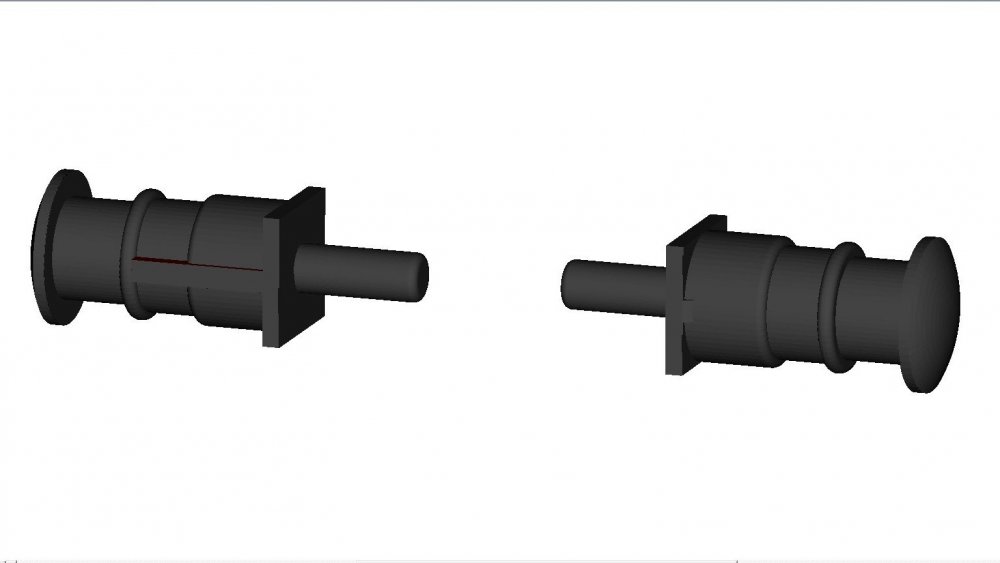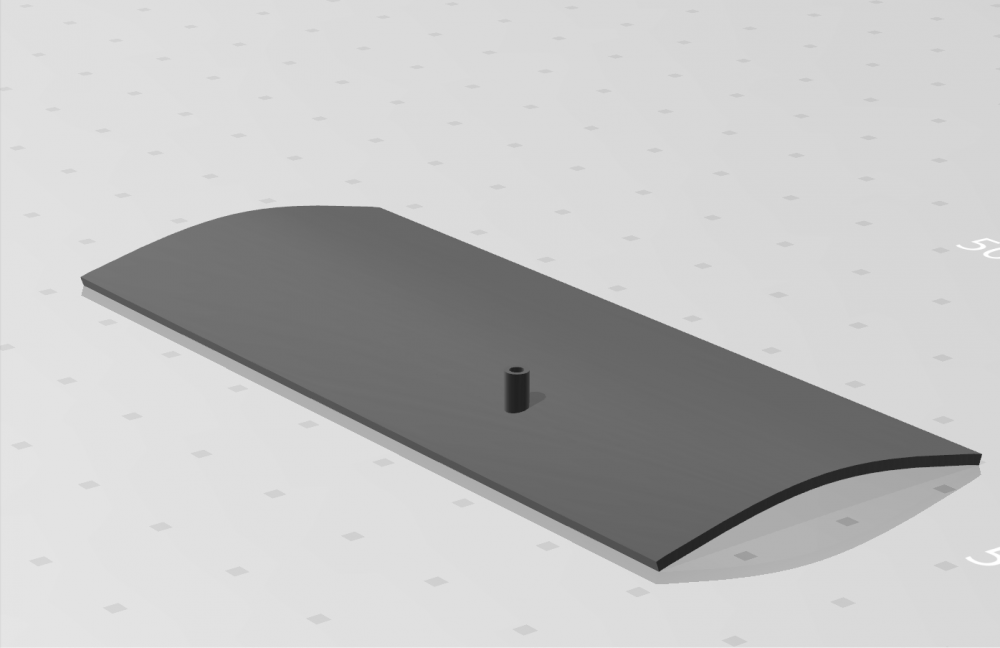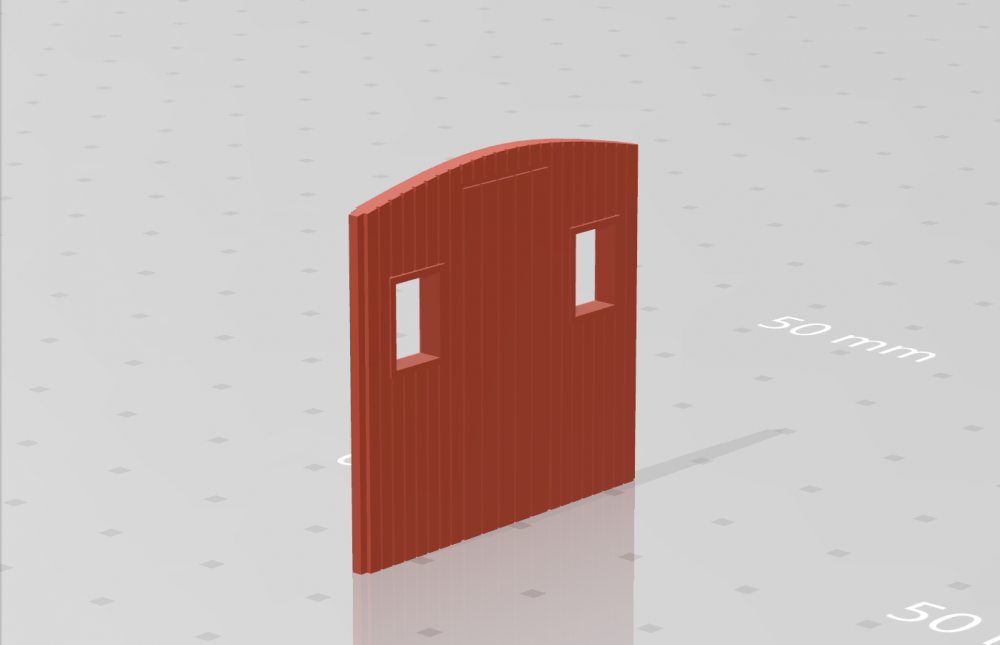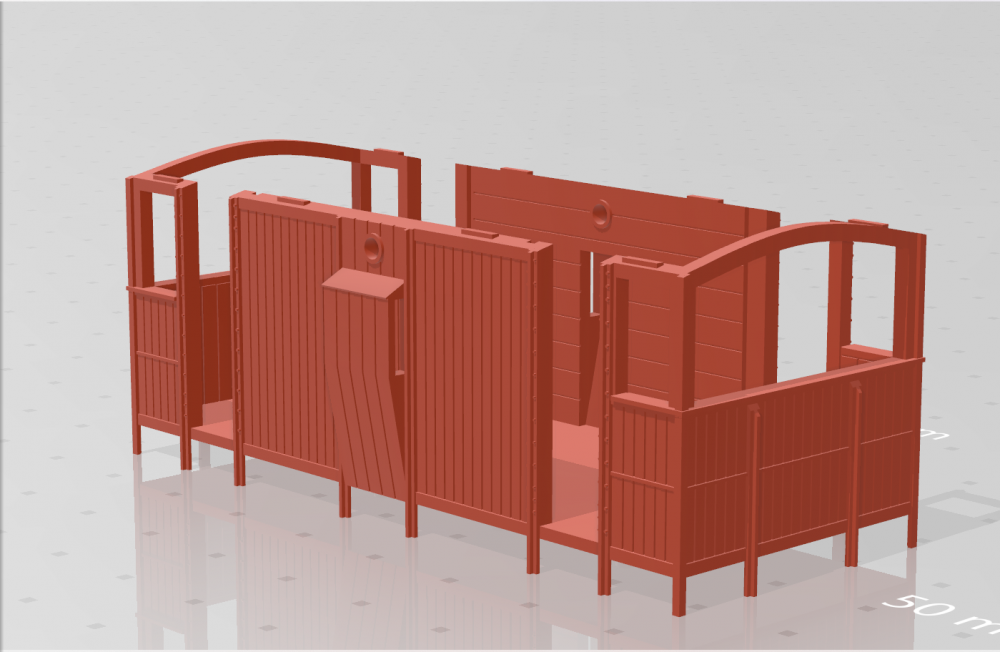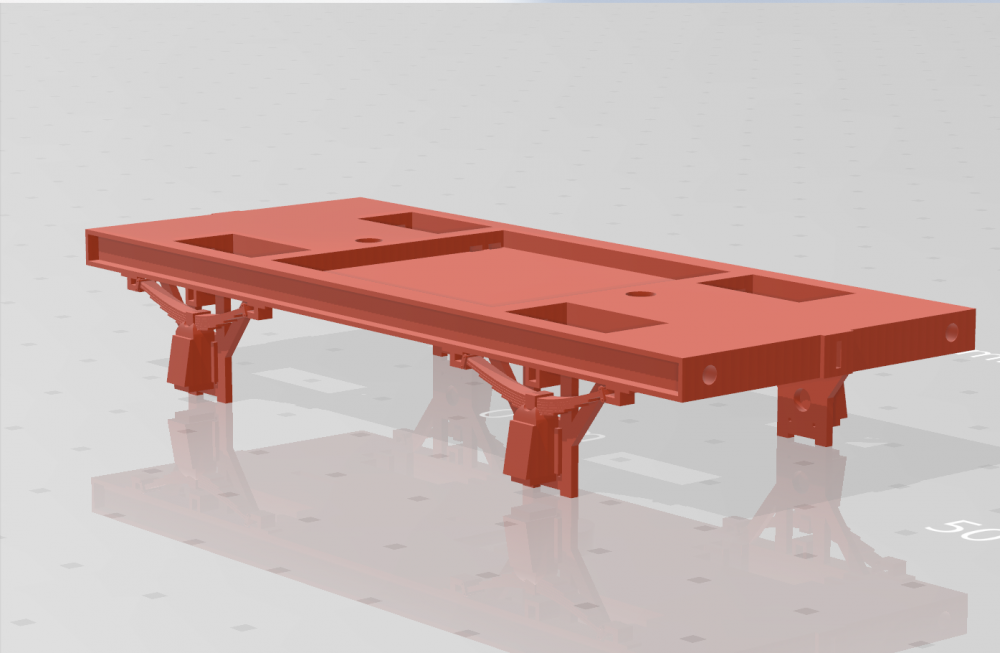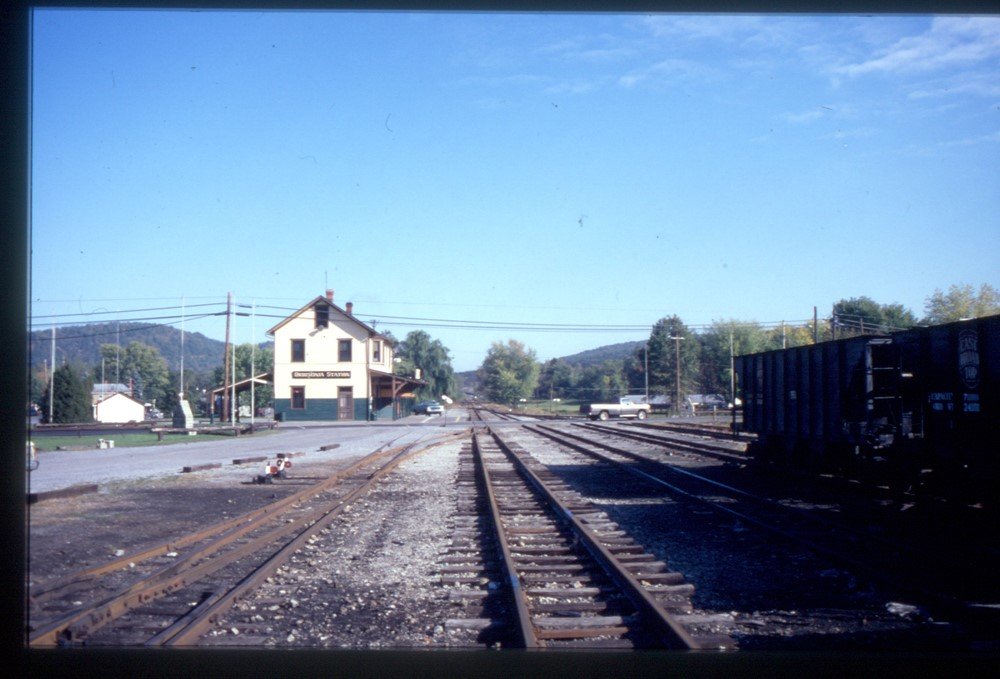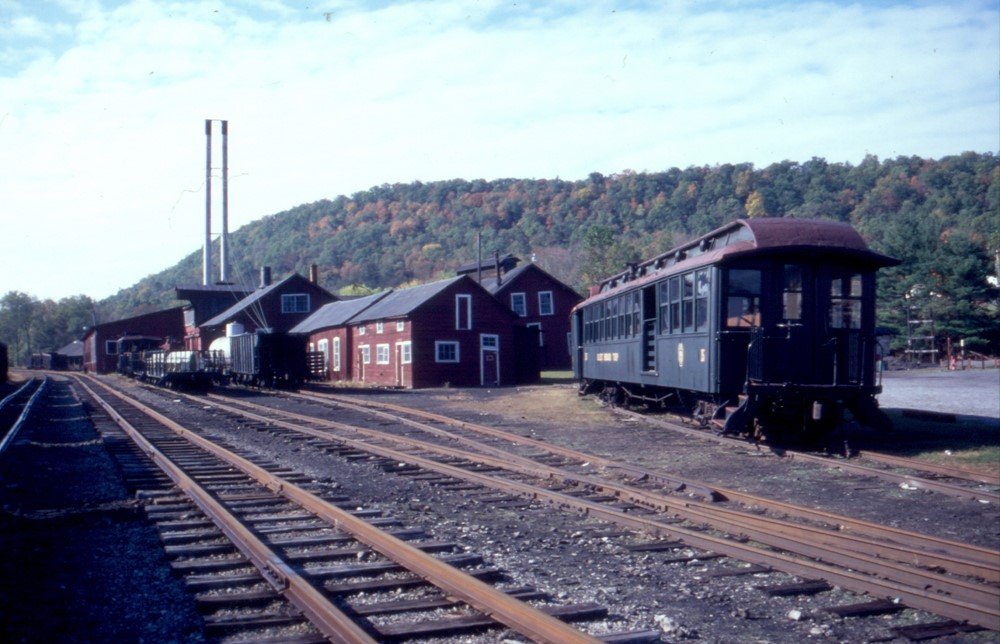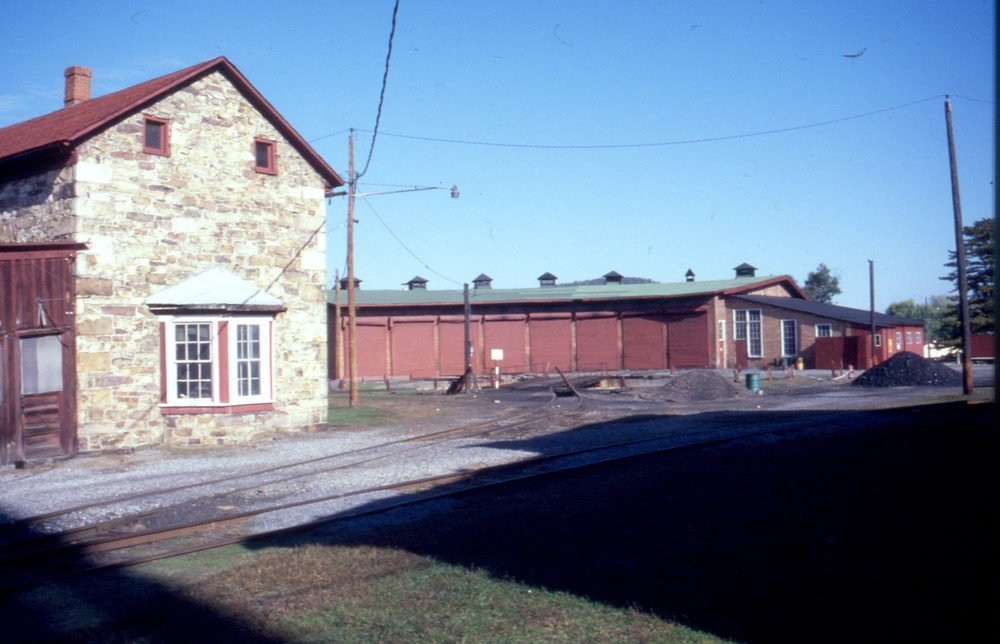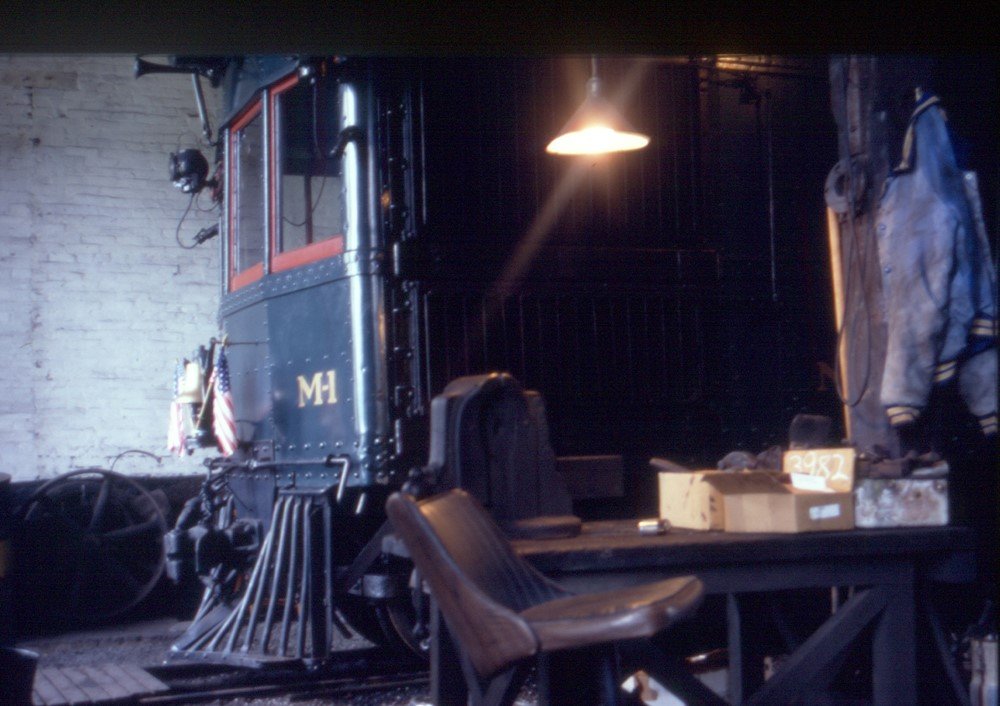-
Posts
4,878 -
Joined
-
Last visited
-
Days Won
119
Content Type
Profiles
Forums
Events
Gallery
Everything posted by Mayner
-
The DSER rebuilt 64 Earl of Bessborough (GSR427) with a high pitched boiler and DSER cab so that it was almost un-recognisable as a LNWR 4'6" tank, there is a photo of 427 about half way down Page 7 on JHBs From the Catacombs thread. The Mercian LNWR 5'6" radial thank might be a better option than a 4'6" tank for an Irish conversion as WLWR 13-14 (GSR 267 & 491) have a striking resemblance to the LNWR locos including cab and bunker profile.
-
Some good news Clare County Council approved a planning application for a 1506SqM Railway Museum at Moyasta during Nov 2019. https://www.planningalerts.ie/application?pref=555AA620181195A5C00024809833CEAC097DFD I don't know if the application relates solely to a museum/store for ITG stock or a West Clare MuseumThere is a €29.37 subscription to view the file on-line. The ITG had applied and failed to obtain planning permission several years ago as a large industrial (museum) building would have been out of keeping with the open (windswept) landscape of the area The ITG web site admits that some of the locos are long term restoration projects and some are simply stored as a source of spares.
-
I have received enough expressions of interest to proceed with a second batch of these kits for release in late 2020. Please send send me a p.m. or respond to this thread if you are interested in placing an order. Heating & Luggage. Luggage Post Office Van
-

Ernies Massive Irish 1930's to 2005 Photo Archive
Mayner replied to Glenderg's topic in Photos & Videos of the Prototype
There is a series of photos of the Bann Viaduct on https://www.geograph.ie/snippet/3725. It looks like the viidaudct opens for shipping. -

Ernies Massive Irish 1930's to 2005 Photo Archive
Mayner replied to Glenderg's topic in Photos & Videos of the Prototype
There are a number of photos of the 15 March 1959 Baltinglass Fair Special in the O'Dea Collection in the National Library, this appears to have been the final revenue working on the Tullow Branch. The train appears to have acted as a positioning run for the branch lifting train the loco continued to Tullow with the coaches and P.W.D stock after dropping the cattle wagons at Baltinglass. http://catalogue.nli.ie/Collection/vtls000148612/Home?lookfor=tullow&filter[]=era_facet%3A"1950-1960"&filter[]=authorStr%3A"O'Dea%2C+James+P.+1910-1992+photographer"&filter[]=topic_facet%3A"Railroads"&submit=Apply It looks like the photo of the Sleeping Van and pwd. stock was taken at Dunlavin (concrete station building and loop lifted) http://catalogue.nli.ie/Collection/vtls000148612/Home?lookfor=Dunlavin&filter[]=era_facet%3A"1950-1960"&filter[]=authorStr%3A"O'Dea%2C+James+P.+1910-1992+photographer"&filter[]=topic_facet%3A"Railroads"&submit=Apply T -

Ernies Massive Irish 1930's to 2005 Photo Archive
Mayner replied to Glenderg's topic in Photos & Videos of the Prototype
I have a copy of the 1960 CIE WTT. Senior seems to have been spot on: 40mph was the line limit for loco hauled trains on the Cork-Bantry main line Clonakilty and Skibbereen sections, while railcars were allowed maximum of 50mph on the straights. Apparently speed seems to have been restricted mainly by the lack of super-elevation or cant on curves, than the poor state of the track passenger traffic seemed to play second place to goods traffic on the West Cork in CIE days. In my experience although there is a veneer of safety in the rail industry, things have not changed a lot from the days your father was a District Engineer on the LMS. As a health and safety inspector I once persuaded a railway operator to shut down re-modelling work on the approach roads to a large intercity terminal, because of similar problems to those observed by Senior while working on the LMS in England. The disturbing thing was that workers were allowed to work in dangerous conditions despite daily safety audits by 3 different Departments. Each department had a siloed mentality and although there was high level planning there was little co-ordination at site level, and were blind to the risks they created for each other. Although the job was audited daily by the Civil Engineering (CE), Signal & Electrical (SE) & PW Departments, there was no shortage of paperwork & PPE, no one seemed to realise that CE and S&E operations were creating highly dangerous conditions for the PW workers pre-fabricating the new trackwork and the guys on site apparently accepting these conditions as a matter of course. Luckily no one was killed or hurt, the voluntary shut down avoided the adverse publicity for the railway of a trip to the Courts, it took two weeks to re-open the job. When I got back to the Office the main concern was the Chief Executive would be unable to go home by train as he thought I had shut down the station. -
The Minister is probably correct with a placeholder livery, it does not quite match any of the standard GM American or Export colour schemes. The single cab may have been to keep costs down and speed delivery using standard jigs and parts while GM worked on developing the double cabbed B141 Class which were delivered approx 2 years later. CIE engaged Scandinavian (Swedish?) consultants to come up with a new corporate image for its road and rail services in the early 60s. The consultants apparently recommended paint buses and passenger trains in the same black and tan scheme, but the powers that be in the passenger road section had other ideas with Dublin City Services, Provincial, CIE Tours each adapting their own distinctive liveries.
-
Both the Crossley and GM powered Metrovicks tended to become a lot dirtier when in service than the pure-bread GM locos, both had 2 stroke engines which tend to smoke rather than throw out oil when worn. Grimy 001 & (B)201 Class locos tended to outnumber clean members of both classes during the Supertrain era. I think the Metrovick body profile with raised engine room vents curved roof profile and slab sides and possibly oil leaks were the main factors soot and grime that collected on the roof tended to wash down over the sides and ends of the locos in typical Irish weather.
-
The rail code number is the rail height expressed in Thou (or thousand of an Inch) thus Code 83 is 8 Thou or .0008" higher than Code 75. Peco Code 75 and 80 track systems were designed for two totally different markets. Peco Code 75 Streamline was designed to provide a closer to scale rail height than the existing Code 100 for the UK and Continental markets. Pointwork geometry is similar to their existing Code 100 Streamline system. Peco Code 83 was designed as an NMRA (National Model Railroad Association) compliant system specifically for the North American market and pointwork. Code 83 point geometry is based on prototype practice and quite different to the Peco Streamline systems. For someone starting out with their first layout the difference is mainly appearance between Peco Streamline Code 100 and Code 75 track systems, both are available with wooden sleepers, with a similar range of points and crossings. Peco provide a useful summary of their different "Streamline" track systems https://peco-uk.com/collections/streamline/75?page=2&view=12&layout= Code 100 is the safest option for someone running older (pre-1990) models with deeper/coarser wheels particularly Lima, Triang, Triang-Hornby), Code 75 with the lighter rail section is probably easier to work with (easier to curve) than the larger Code 100 rail section.
-

Ernies Massive Irish 1930's to 2005 Photo Archive
Mayner replied to Glenderg's topic in Photos & Videos of the Prototype
The compartment with the sloping roof was described as a "dog box" by Padraic O'Cuimin in his IRRS paper on MGWR Coaching Stock in the early 1970s, the final design of MGWR was more conventional in outline with a full height tack compartment replacing the dog box. Before the invention of the motorised horsebox in the 1920s & 30s horses and hounds would have been transported by passenger train to hunts and equestrian events in different parts of the country, similarly horse drawn carriages and wagons would have been transported by carriage truck. -
I don't think any land was sold off, the present freight yard was built in the 1970s on the site of the loco depot. The yard was originally laid out with two through roads one served by a gantry for container traffic, the second for palletised cement and fertiliser traffic. The reach stacker requires a wider space to operate than the gantry with containers stored in the area once occupied by the cement store and fertiliser storage area. The goods yard was originally on a narrow site between what is now the main running line and station road, a short section of the Killala line known as the "Crossmolina Siding" was retained as a goods yard after the branch closed in the late 1930s.
-
Thanks to everyone for their comments and photos of the stoves, the stove is likely to be an interesting challenge to my 3D designer more natural and organic in shape than the rest of the van Broithe's comments about Brigg reminds me of the scene from the "Biderbech Trilogy" with the East/West German style border crossing when Trevor & Jill see off a visitor at a foggy Humber Bridge. The 20T goods brakes were more popular with the guards than the more modern 30T versions, they were supposed to have a better brake and being more smoother riding. The interior of of 20T vans with double planking and a wooden roof would have been less subject to extreme heat and cold and more comfortable that the all steel 30T vans with no wall or roof insulation.
-
I suppose the big question is whether there is greater demand for an Irish "Starter Set" at the toy or model end of the market. A wooden 2-3 car Intercity railcar or DART set either locally made or imported would probably be a hit with children in the 3-5 age group as these trains are more likely to fit in with their parents formative experiences. Bachmann and to a degree Hornby still cater for the entry level toy train market with Thomas the Tank Engine and their more basic models, but an Irish pre-teen or teenager starting out in model railways is more likely to be interested in the trains they see every day railcars and the odd freight than something that attracted their grandparents generation. In my opinion an existing basic but durable model in IE or Translink colours like the Bachmann IE railcar repaints was a good approach, the Murphy Models (Lima) 201& a rake of Hornby Freightliner wagons would make a nice durable/playable model of a modern container train if Murphy Models & Hornby could find away.
-
Has anyone a photograph of a CIE brake van stove? We are planning to add a detailed interior, complete with brake wheel, benches and stove, but haven't a photo of a stove. I didn't think of the interior when I last visited Cultra or measured up a 30T van at Gort many moons ago.
-
The 3D printed SLA prototype arrived yesterday quickly followed by a trip to the paint shop to highlight fine detail. Buffers are temp MJT and will be replaced with more prototypical GSR type in the production version. The model received minimum cleaning up or surface treatment before priming and I managed to damage the sole bar at one end while opening up a pre-formed hole for the buffer casting. I did not realise the roof was not sitting correctly until I saw the photo. Although some minor adjustments are required, I am reasonably happy with the strength of components and surface finish of the SLA model the next step is completing the detailing and adding separately applied features including brake gear, buffers, coupling mounts, foot steps, side lamps and interior detail. At this stage the production version is likely to be a vacuum cast urethane resin with abs characteristics, though its feasible to produce 3D printed SLA models to order.
- 62 replies
-
- 12
-

-
A crowdfunded the promoters are uncertain about the level of demand and a project does not proceed unless it achieves specific funding targets, with pre-orders the manufacturer/commissioner is reasonably confident about the level of demand and has already decided to proceed with the project. A crowdfunded model may be more expensive than a speculative model produced by a manufacturer/commissioner because of a smaller production run and the additional cost of the crowdfunding platform fees, the manufacturer/commissioner are highly unlikely to undertake the design and production of the model unless they can make a profit on the transaction. The HO Auto Boxcar project is a good example of the likely uptake for a crowdfunded appeal for a small production run of a wagon or coach https://www.indiegogo.com/projects/ho-40-single-sheathed-box-and-auto-cars-1929-70s#/updates/all.
-
Crowdfunding is reasonably safe when its set up through an established crowdfunding platform like "Kickstarter" rather than the company that is selling the models. Crowdfunding got a bad reputation in the UK when money raised by Crowdfunding was not ringfenced and apparently used to prop up an undercapitalised and failing business. If they believe there is sufficient demand for a particular model there is nothing to stop a member or members of this group setting up a crowdfunding appeal with the objective of raising €1.7m * to commission Murphy Models to do a re-run of the Bachmann B141/181 (10,000 locos @ €160 + 5% Crowdfunding platform fee based on Bachmann's min. production run. On a less ambitious scale a crowdfunding appeal could be used to establish of there is sufficient demand for a high quality rtr CIE Buffet Car or BR Heating Van to run with Murphy Models Cravens The appeal would need to raise approx €250,000 based on 3000 coaches selling at approx €80 + fee
-
A E3 (Class 47) appears to have been regularly allocated to Wexford in GSR days possibly for Rosslare-Wexford local trains and shunting, there is a photo of 49 shunting coaching stock at Wexford North in 1945. Apparently the 0-4-4Ts had a reputation for fast running working Cork-Cobh trains until replaced by the Ivatt 2-4-2T in the early 1900s and working Limerick-Abbeyfeale passenger trains into the 1930s. A daily Wexford-Enniscorthy mixed train operated in the GSR/CIE steam era usually worked by an ex-WLWR 2-4-0 290. 290 seems to have been based in Wexford worked a train to Enniscorthy in the morning, before taking up pilot duties (shunting) at Enniscorthy and returned in the late afternoon with the mixed to Wexford. There is a photo of the afternoon mixed at Macmine Junction in Donal Murrays Great Southern Railway Pictorial, 290 is hauling a single 6 wheel coach and a train made up mainly of open wagons. North Wexford line passenger trains also worked through to Wexford North in GSR & CIE days, running round and terminating local trains would have involved a lot of shunting with a single platform face and may have justified a tank loco as a shunter in addition to the locos working the scheduled passenger and mixed trains. The Wexford-Rosslare local passenger trains continued to operate during the Summer Holiday season with a B141 & CIE Bredin stock until the service was withdrawn in the late 1970s
-
Have you the Decoder specification or instructions? There is information on fitting stay alive capacitors to decoders that are not pre-wired for capacitors. https://www.hornby.com/uk-en/forum/post/view/topic_id/13404/?p=2
-
The big question is whether there is enough demand for it to be financially worthwhile for Murphy Models to do a re-run of the B141/181 given Kader (Bachmann) minimum production run without re-tooling. Since producing the Murphy Models Kader (Bachmann) has focused on high volume manufacture for its own in house brands, ceased manufacturing for competitors in the US and UK market like Walthers and Hornby and moved away from low volume OEM commissions like Paddy Murphy https://en.wikipedia.org/wiki/Kader_Group. Kaders focus on its own brands lead to the growth of a cottage industry (by Far Eastern standards) of smaller factories with smaller minimum production runs than Kader who became OEM manufacturers for companies like Atlas, Hornby, Walthers and the large number of "Commissioners" & retailers who market limited runs of one off models such as Kernow, Hattons and Rails that appeared during the last 10 years. There is a possibility that re-tooling may be required for a repeat run of the small Bo Bos, as the tooling may have been made from a softer material such as aluminium rather than steel to keep the cost down for a limited production run for the Irish market and have become life expired, Kader may be reluctant to hand the tooling over to another factory without some form of compensation if they are unable or unwilling to produce a repeat run for Murphy Models.
-
A brief preview of the CAD work for the prototype of our first 4mm OO Gauge traditional Irish goods wagon a CIE 20T goods brake. The prototype is to verify that certain elements of the model are of adequate strength and to check the re-production of finer detail such before we progress to the production CAD work, including full rivet detail, buffers, brake gear, marker lamps, foot steps and the guards stove and bench seats. At this stage we are looking at the option of producing the model using 3D SLA technology with an abs material or vacuum casting using an abs resin material. We are looking at the option of producing the brake van as a rtr model or a CKD kit similar to the Trix Private Owner wagons of the 1970s. All going well we expect to have a preview of the prototype within the next two weeks.
- 62 replies
-
- 19
-

-
The Lucan and the Clontarf-Howth tramways were probably the nearest thing in Ireland to an American Interurban a modern electric tramway linking a city with an outlying town. The right of way of the Clontarf-Howth line now forms the coast road between Dollymount and the Old Howth Road, the closure of the Lucan line in 1940 seems really shortsighted the DUTC having completely re-built the line to modern standards when it took over the narrow gauge Dublin & Lucan line in the 1920s. I wonder do any photos exist of the DUTC Clontarf-Howth tram as opposed to the GNR Hill of Howth Tram?
-
By co-incidence I just read Bob Clements article on the Armagh Disaster which questioned some of the technical aspects of the Railway Inspectors report and undermines criticism of the driver and fireman of the ill fated excursion train. I once met Bob Clements at an IRRS meeting in the early 1980s, as far as he was concerned J19s rebuilt with X Superheated boilers like 603 were really Southern engines. He later gave me a diagram and photos of the L Class following their early 1900 rebuild with conventional cabs and saturated belpaire boilers, most touching bit was a hand written letter with his dogs paw prints. Hopefully I still have that letter somewhere.
-
The story motivated me to scan some slides from that North Eastern trip. Apart from the neatly painted passenger stock yard at Orbisonia has the atmosphere of a coal hauling railroad than a heritage operation. The main line looking North towards Orbisonia Station and the Pennsylvania Railroad interchange at Mount Union. The depot and yard are actually in the city of Rockhill Furnaces. General view of the yard and shops looking South. Clos Closeup of the Works main line to Robertsdale in center. Classical board and batten wall cladding. Brick roundhouse in distance. Pennsylvania Dutch farm house retained as office, Germanic looking roundhouse. Modern traction M-1 1920s Gas Electric Doodlebug railcar assembled by EBT from a kit supplied by Brill EBT No 14 is one of 6 increasingly larger 2-8-2 locomotives built for the railroad between 1911 & 1920. The railroad had considered buying diesel electric locos in the early 1950s but coal traffic fell off severely as a result of the shift to oil and gas during the mid 1950s. Taking a time exposure inside the shed was challenging but rewarding.
-
Barry Carse outlined the background of the CIE power planning system in his book the Irish Metrovick Diesels (Colourpoint 1996) Class A-------------1200hp upwards------------ 1-100 Class B------------800-1100hp---------------------101-200 Class C----------- 500-750hp------------------------210-300 Class D----------- 487hp Shunters---------------301-400 Class E------------420ho Shunters----------------401-500 Class F------------224hp Narrowgauge---------501-600 Class G----------0-4-0 Shunters-------------------601-700 Its possible that CIE may not have considered a requirement for a higher powered loco in the early 1950s as a 1200-1300 hp may have been the practical limit in terms of power for a 6 axle diesel electric with wide route availability on the Irish railway system. Weight was a significant issue with diesel electric in the early 1950s with establish builders struggling to design locos within the limits specified by CIE, GNR & UTA The B and C class power ratings are broadly in line with those envisaged for main line mixed traffic by the GNR and a joint GNR/UTA working group in the early 1950s. The joint working group initially identified a locomotive within an 800-1000hp power range for main line passenger and mixed traffic work and a "light locomotive" capable of 35-40mph for tripm working and shunting, the GNR later refined this to 1000hp for express passenger and heavy goods work, 800hp Mixed Traffic and 400hp Shunting and Trip work. Interestingly in its tender to the GN Metropolitan Vickers proposed the 1200hp Co Co it was building for CIER for the 1000hp category at £61,433 and C Class in the 400hp power category. GM proposed its standard 875hp export G8 A1A A1A £52,179 and Nohab proposed its (GM powered) 1310hp A1A A1A at £63,414 It looks like the Metrovick order was more tied up with currency exchange and improving Anglo-Irish relations than CIE achieving value for money. Some of the Class C were re-classified as Class B but retained their original running numbers, beginning with C233 & 234 when they were rebuilt with Maybach 1200hp MD-650 engines in 1965 and 66 some of the rebuilt C Class were repainted directly into the Supertrain scheme following re-build and did not receive the Class B suffix.
.png.c363cdf5c3fb7955cd92a55eb6dbbae0.png)




